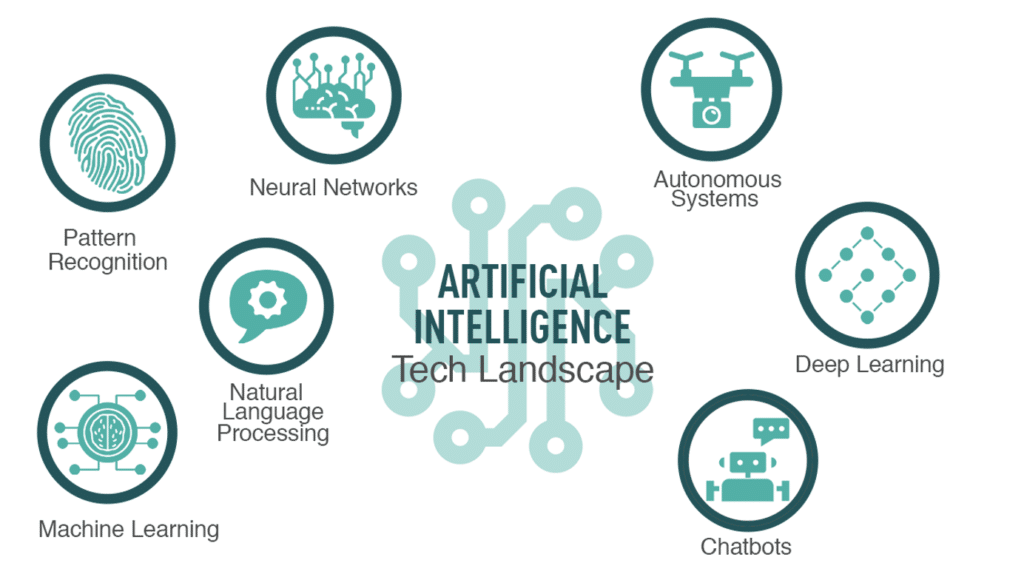Today as consumers, we are using Artificial Intelligence (AI) and Natural Language Processing (NPL) in many aspects of our daily lives. If you have a smartphone, many of the Apps on your device use AI for determining your location (for GPS navigation) and to produce the best search results for your inquiries. In our homes, our appliances (from our thermostat to our refrigerators), may use AI to determine the best temperature settings (depending on if we are away or at home). And, if you use devices like Google Home, Siri, or Alexa, you can use NLP to provide voice commands, using your natural speech, to play music, share the daily news headlines, or the weather.
We have begun to appreciate the convenience, efficiency, and ease of use of these technologies to help us in our daily lives. Why don’t we provide these same technologies in the workplace, to help our employees be more productive, reduce frustrations of looking for information, and free up valuable time?
Often, it may be due to a lack of understanding or misinformation about how these technologies work, how you can apply it to business and employee needs, and the time/costs for implementing (or configuring) solutions that better employees’ lives in the workplace to make work more meaningful.
Let’s bust some myths about AI, NLP, and automation, so that you and your organization can take steps to incorporating it into your workflows and business process, to support your valuable employees.
Myth #1:
Artificial Intelligence (AI) and Natural Language Processing (NLP) are complicated and require technical team members to implement and maintain.
Artificial intelligence (AI) is a branch of computer science focused on building smart machines capable of performing tasks that typically require human intelligence. And that’s the key…that humans are involved in creating the AI algorithms, rules, and data models that are applied to our lives as consumers and in the workplace.

While there are various types of AI solutions, from email spam filters, self-driving cars, to Amazon and Netflix’s recommendations, there are tools, like smart assistants (Siri/Alexa) and AI chatbots, that allow the AI to be more “accessible” and easier to use for non-technical people. Intelligent Assistants, like MeBeBot’s AI Chatbot for automating answers to employees’ FAQs, apply the same technologies used by Siri and Alexa (NLP and Machine Learning) to automate answers to questions employees ask within the workplace.
Not all AI Chatbot solutions are the same…some do require technical resources to “train” and supervise the machine learning (ML or way the bot learns how to produce accurate answers). MeBeBot provides dedicated Customer Success Managers that support the machine learning process, as they understand the content and can help train the AI and ML for 90% accuracy of answers at launch.
But what makes MeBeBot unique is that we provide the business users (in HR, IT, Facilities, Accounting, Legal, and Ops team members) with a Customer Admin Portal, so that the answers employees receive is as easy to update, manage, and maintain as it is to update a Word document. MeBeBot is like a “bot in a box” so that any sized company can configure and launch a solution to employees, in days to weeks.

Myth #2:
AI and automation technologies are expensive and will be time consuming projects; and we don’t have the internal resources to deploy these types of solutions.
The value companies place on time and how it is spent within organizations is key to overall productivity and profitability. However, few organizations look at the wasted time of current processes and workflows today. According to McKinsey, employees spend 1-2 hours a day looking for answers and information to their needs to be productive.

Yet few organizations examine the opportunity cost of “doing nothing” or overlooking internal inefficiencies often results in the costs of employee turnover, lack of internal productivity, and overall losses that impact on the bottom line.
What’s the time to value and return on investment on leveraging AI and automation within the workplace? When developing your business case to deploy digital transformation solutions to improve processes, it’s important to examine the overall cost of the technology software and tools and the labor cost of the time it takes to implement or configure.
Many companies have experienced painful technical hardware and software implementations over the years, from both on premise solutions to cloud-based solutions. These experiences may have included expensive software, that was hard to customize or configure to meet your business needs, that exceeded project timelines and budgets.
However, with “no code / low code” solutions that leverage AI and drive automation, there are options available to business users that are “out of the box,” providing easy to use interfaces with little to no technical knowledge. With solutions, like MeBeBot’s Intelligent Assistant (installing in Slack/Teams/web chat in 5 minutes) and its employee experience Customer Admin Portal, launching automation to employees can be painless. With minimal impact on other business solutions and processes, MeBeBot’s customers realize a time to value in under two months and an ROI of 200% within the first year.
Myth #3:
AI and Automation will eliminate jobs.
We are entering into the fourth industrial revolution, where machines and people will continue to work together as “Super Teams” and automation of routine, dangerous, and complex tasks will be augmented by technology.
Augmentation, or to better people’s lives in the workplace, by applying their skills and experiences they bring to organizations in impactful ways, is key to understanding the benefits of AI and automation.
For many years, internal processes have been developed. Often, there is no focus on optimization of time. By leveraging digital transformational technologies and solutions to elevate employees’ roles within the organization, we allow the machines to take on the routine or administrative so that we can free up valuable time and focus on strategic tasks that rely on human cognitive thinking.
Just as in other eras, the fourth industrial revolution may eliminate roles in companies that are hard to fill, with low pay and little rewards. However, it will create new categories of jobs within companies, as it has over the decades (see examples below)>

AI and automation can provide benefits in various parts of the business, from taking on routine call center support for customers to helping with manufacturing processes. Within the roles of HR, AI is being used in all facets of HR, from talent acquisition to career development.

The recent pandemic has left many companies with overworked team members, turnover in staff, and difficulty in hiring new team members, with the skills and abilities to perform the tasks to solve core business problems.
“AI is definitely not eliminating jobs, it is eliminating tasks of jobs, and creating new jobs.”
-Josh Bersin, Bersin Consulting
By augmenting HR and IT with solutions and tools that facilitate automation, managed by people, organizations that have suffered losses (both financial and with internal resources), can start to recover and optimize themselves to scale and grow in a sustainable manner over the coming years.
MeBeBot’s Intelligent Assistant seamlessly installs as an app in Teams, Slack, or web portals to provide employees with instant automated answers to global HR, IT, and Ops FAQS, real-time usage Dashboards, Push Messaging, and custom Pulse Surveys, generating instant employee feedback on of-the-moment questions. MeBeBot’s “one-stop bot” is trusted by leading organizations to elevate the employee experience so work can be more meaningful and valuable.
Visit our website at https://mebebot.com
